Tribological Research of Resin Composites with the Fillers of Glass Powder and Micro-Bubbles
Abstract
1. Introduction
2. Materials and Methods
2.1. Materials
2.2. Methods
3. Results
3.1. Friction Coefficient
3.2. Wear Resistance
3.3. SEM Analysis of Composite Surface
3.4. Multicycle Scratch Testing
4. Discussion
5. Conclusions
- The most wear-resistant RGP composites are those with a 2–3% concentration of glass powder (the wear after 2 km run at changeable load is up to two times lower than reference sample) and RMB composites with a 3–4% micro-bubbles concentration (it reduces the wear up to 60%).
- The value of the friction coefficient of tested samples does not depend significantly on the speed; it is mainly determined by the load (by gradually increasing the load from 40 N to 100 N, the coefficient increases from 0.02–0.06 to 0.14–0.18). The stable and lower friction coefficient is the factor that determines the highest wear resistance.
- SEM analysis of the worn surface revealed its damage character. During the operation of the samples, scratches and cracks formed on the surface. Abrasive, fatigue, and adhesion wear mechanisms were observed, with glass powder particles leading to non-uniform surface structures and microbubble composites showing delamination effects.
- The 3–4% concentration RGP composites and 2–3% RMB composites increased the indentation resistance of the composites when the surface was scratched in the range of high loads (15–30 N). This property correlates with the wear resistance of investigated composites.
Author Contributions
Funding
Institutional Review Board Statement
Informed Consent Statement
Data Availability Statement
Acknowledgments
Conflicts of Interest
References
- ISO-DIS 17296-2; Additive Manufacturing. General Principles, Part 2 Overview of Process Categories and Feedstock. 1st ed. Technical Committee: ISO/TC 261. ISO: Geneva, Switzerland, 2015.
- Thompson, M.K.; Moroni, G.; Vaneker, T.; Fadel, G.; Campbell, R.I.; Gibson, I.; Bernard, A.; Schulz, J.; Graf, P.; Ahuja, B.; et al. Design for Additive Manufacturing: Trends, Opportunities, Considerations, and Constraints. CIRP Ann. 2016, 65, 737–760. [Google Scholar] [CrossRef]
- Mamba’udin, A.; Handayani, M.; Triawan, F.; Rahmayanti, Y.D.; Muflikhun, M.A. Excellent Characteristics of Environmentally Friendly 3D-Printed Nasopharyngeal Swabs for Medical Sample Collection. Polymers 2023, 15, 3363. [Google Scholar] [CrossRef] [PubMed]
- Vasco, J.C. Additive Manufacturing for the Automotive Industry. In Additive Manufacturing; Elsevier: Amsterdam, The Netherlands, 2021; pp. 505–530. [Google Scholar]
- Najmon, J.C.; Raeisi, S.; Tovar, A. Review of Additive Manufacturing Technologies and Applications in the Aerospace Industry. In Additive Manufacturing for the Aerospace Industry; Elsevier: Amsterdam, The Netherlands, 2019; pp. 7–31. [Google Scholar]
- Mohseni, M.; Hutmacher, D.W.; Castro, N.J. Independent Evaluation of Medical-Grade Bioresorbable Filaments for Fused Deposition Modelling/Fused Filament Fabrication of Tissue Engineered Constructs. Polymers 2018, 10, 40. [Google Scholar] [CrossRef] [PubMed]
- Stano, G.; Sayah, N.; Smith, D.E.; Fleck, T.J. Effect of Process Parameters in Additively Manufactured Sensors Prepared via Material Extrusion Processes: Correlation among Electrical, Mechanical and Microstructure Properties. Addit. Manuf. Lett. 2024, 9, 100194. [Google Scholar] [CrossRef]
- Rohani Shirvan, A.; Nouri, A.; Wen, C. Structural Polymer Biomaterials. In Structural Biomaterials; Elsevier: Amsterdam, The Netherlands, 2021; pp. 395–439. [Google Scholar]
- Tjong, S.C. Structural and Mechanical Properties of Polymer Nanocomposites. Mater. Sci. Eng. R Rep. 2006, 53, 73–197. [Google Scholar] [CrossRef]
- Joshi, A.; Goh, J.K.; Goh, K.E.J. Polymer-Based Conductive Composites for 3D and 4D Printing of Electrical Circuits. In 3D and 4D Printing of Polymer Nanocomposite Materials; Elsevier: Amsterdam, The Netherlands, 2020; pp. 45–83. [Google Scholar]
- Dawan, F.; Jin, Y.; Goettert, J.; Ibekwe, S. High Functionality of a Polymer Nanocomposite Material for MEMS Applications. Microsyst. Technol. 2008, 14, 1451–1459. [Google Scholar] [CrossRef]
- Xu, Z.; Chen, Y.; Chen, X.; Zhang, J.; Huang, S.; Chen, A.; Fu, X.; Wu, F.; Zhang, P. Enhanced Thermal Conductivity and Electrically Insulating of Polymer Composites. J. Mater. Sci. 2021, 56, 4225–4238. [Google Scholar] [CrossRef]
- Şevik, S.; Çiçek, B.; Özdilli, Ö.; Aydoğmuş, T.; Özer, Z. Thermal Performance Analysis of Aluminum, Copper, and Graphene Nanoplatelets-Doped Nanocomposite Heat Sinks Manufactured via Stereolithography. Appl. Therm. Eng. 2023, 226, 120315. [Google Scholar] [CrossRef]
- Feng, X.; Yang, Z.; Chmely, S.; Wang, Q.; Wang, S.; Xie, Y. Lignin-Coated Cellulose Nanocrystal Filled Methacrylate Composites Prepared via 3D Stereolithography Printing: Mechanical Reinforcement and Thermal Stabilization. Carbohydr. Polym. 2017, 169, 272–281. [Google Scholar] [CrossRef]
- Tsai, S.-C.; Chen, L.-H.; Chu, C.-P.; Chao, W.-C.; Liao, Y.-C. Photo Curable Resin for 3D Printed Conductive Structures. Addit. Manuf. 2022, 51, 102590. [Google Scholar] [CrossRef]
- Padgurskas, J.; Rukuiža, R.; Žunda, A. Evaluation of tribological and mechanical properties of carbon steel with fluoroligomeric film at piezoelectric actuator contact. Coatings 2022, 12, 463. [Google Scholar] [CrossRef]
- Lin, L.-Y.; Kim, D.-E. Tribological properties of polymer/silica composite coatings for microsystems applications. Tribol. Int. 2011, 44, 1926–1931. [Google Scholar] [CrossRef]
- Zhang, Y.; Zhang, D.; Wei, X.; Zhong, S.; Wang, J. Enhanced Tribological Properties of Polymer Composite Coating Containing Graphene at Room and Elevated Temperatures. Coatings 2018, 8, 91. [Google Scholar] [CrossRef]
- Ren, Y.; Zhang, L.; Xie, G.; Li, Z.; Chen, H.; Gong, H.; Xu, W.; Guo, D.; Luo, J. A review on tribology of polymer composite coatings. Friction 2021, 9, 429–470. [Google Scholar] [CrossRef]
- Nugroho, A.D.; Nugraha, A.D.; Muflikhun, M.A. Novel Hybrid Tube Consists of GFRP-PU-Graphite Powder for Lightweight Structure Applications. Mater. Lett. 2024, 357, 135772. [Google Scholar] [CrossRef]
- Aryaswara, L.G.; Kusni, M.; Wijanarko, D.; Muflikhun, M.A. Advanced Properties and Failure Characteristics of Hybrid GFRP-Matrix Thin Laminates Modified by Micro Glass Powder Filler for Hard Structure Applications. J. Eng. Res. 2023. [Google Scholar] [CrossRef]
- Kumar, P.; Kumar, V.; Kumar, R.; Kumar, R.; Pruncu, C.I. Fabrication and Characterization of ZrO2 Incorporated SiO2–CaO–P2O5 Bioactive Glass Scaffolds. J. Mech. Behav. Biomed. Mater. 2020, 109, 103854. [Google Scholar] [CrossRef] [PubMed]
- Mehdikhani, M.; Gorbatikh, L.; Verpoest, I.; Lomov, S.V. Voids in Fiber-Reinforced Polymer Composites: A Review on Their Formation, Characteristics, and Effects on Mechanical Performance. J. Compos. Mater. 2019, 53, 1579–1669. [Google Scholar] [CrossRef]
- Dawan, F.; Givens, M.; Williams, L.; Mensah, P. Carbonated 3D-Printable Polymer Composite for Thermo-Mechanically Stable Applications. J. Manuf. Mater. Process. 2022, 6, 66. [Google Scholar] [CrossRef]
- Vaezipour, M.; Shabgard, M.R.; Kazemi, M. Wear Properties of Acrylic Dental Material 3D Printed via Digital Light Processing: Influence of Process Settings. Proc. Inst. Mech. Eng. Part C J. Mech. Eng. Sci. 2024. [Google Scholar] [CrossRef]
- Wu, T.; Lu, Y.; Yang, X.; Liu, D.; Ji, Z.; Wang, X.; Zhou, F.; Wang, Q.; Liu, W. Vat Photopolymerization 3D Printing of Oil Filled Cyanate Ester for One-Step Fabricating Self-Lubricating Parts. Compos. Part B Eng. 2023, 266, 110996. [Google Scholar] [CrossRef]
- Slapnik, J.; Stiller, T.; Wilhelm, T.; Hausberger, A. Influence of Solid Lubricants on the Tribological Performance of Photocurable Resins for Vat Photopolymerization. Lubricants 2020, 8, 104. [Google Scholar] [CrossRef]
- Hanon, M.M.; Ghaly, A.; Zsidai, L.; Klébert, S. Tribological Characteristics of Digital Light Processing (DLP) 3D Printed Graphene/Resin Composite: Influence of Graphene Presence and Process Settings. Mater. Des. 2022, 218, 110718. [Google Scholar] [CrossRef]
- Du, G.; Guo, J.; Wang, J.; Bian, D.; Zhang, X. Tribological Behavior of 3D Printed Nanofluid Reinforced Photosensitive Self-Lubricating Polymer Materials. Addit. Manuf. 2024, 80, 103959. [Google Scholar] [CrossRef]
- Zhang, L.; Zeng, Y.; Yao, H.; Shi, Z.; Chen, J. Fabrication and Characterization of ZrO2(3Y)/Al2O3 Micro-Ceramic Gears with High Performance by Vat Photopolymerization 3D Printing. Ceram. Int. 2024, 50, 5187–5197. [Google Scholar] [CrossRef]
- Choi, B.-L.; Jung, J.-K.; Un, B.B.; Choi, B.-H. Effect of Functional Fillers on Tribological Characteristics of Acrylonitrile Butadiene Rubber after High-Pressure Hydrogen Exposures. Polymers 2022, 14, 861. [Google Scholar] [CrossRef]
- Albahkali, T.; Fouly, A.; Alnaser, I.A.; Elsheniti, M.B.; Rezk, A.; Abdo, H.S. Investigation of the Mechanical and Tribological Behavior of Epoxy-Based Hybrid Composite. Polymers 2023, 15, 3880. [Google Scholar] [CrossRef]
- ASTM G77-17; Standard Test Method for Ranking Resistance of Materials to Sliding Wear Using Block-on-Ring Wear Test. ASTM International: West Conshohocken, PA, USA, 2017.
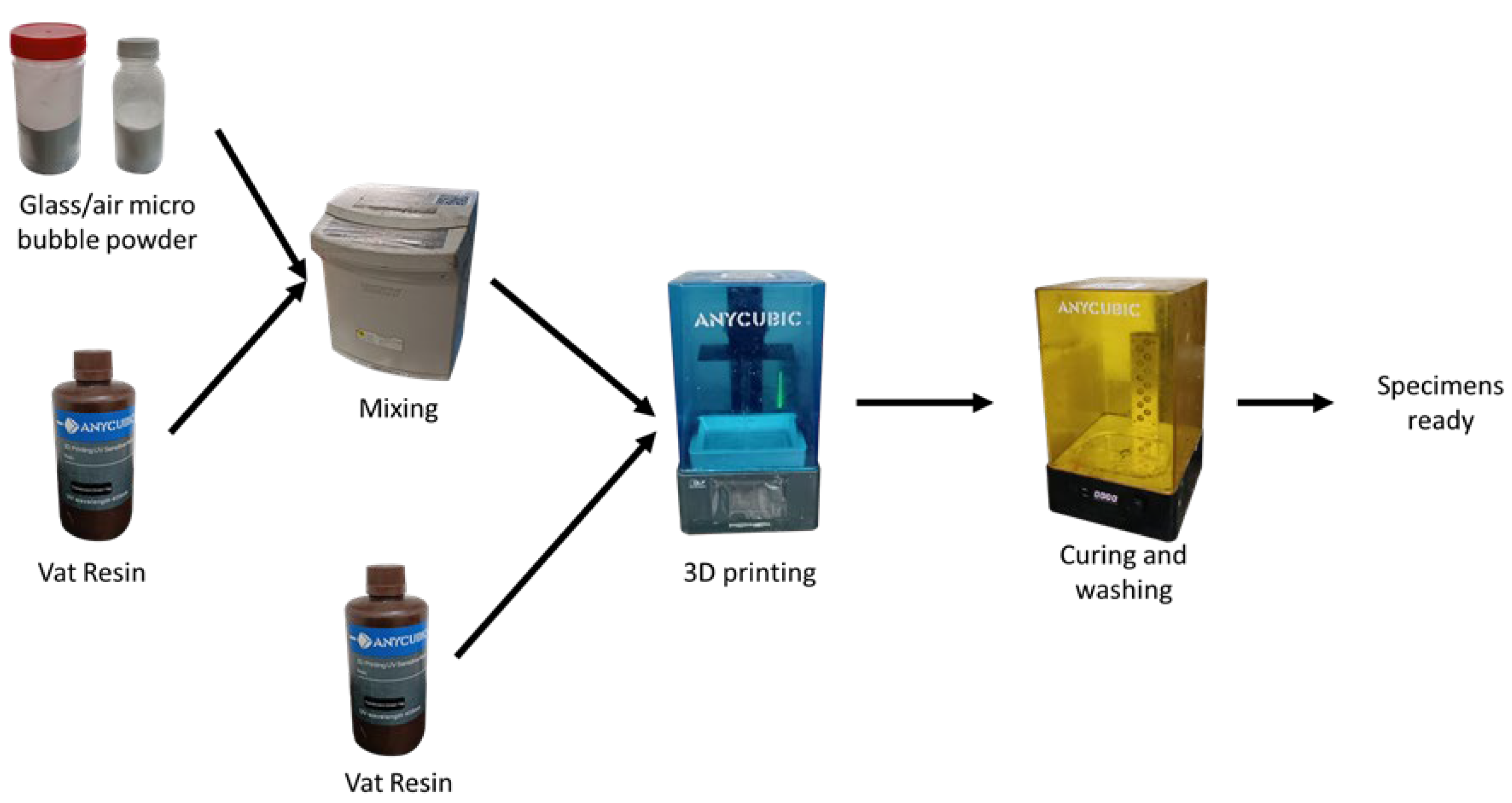
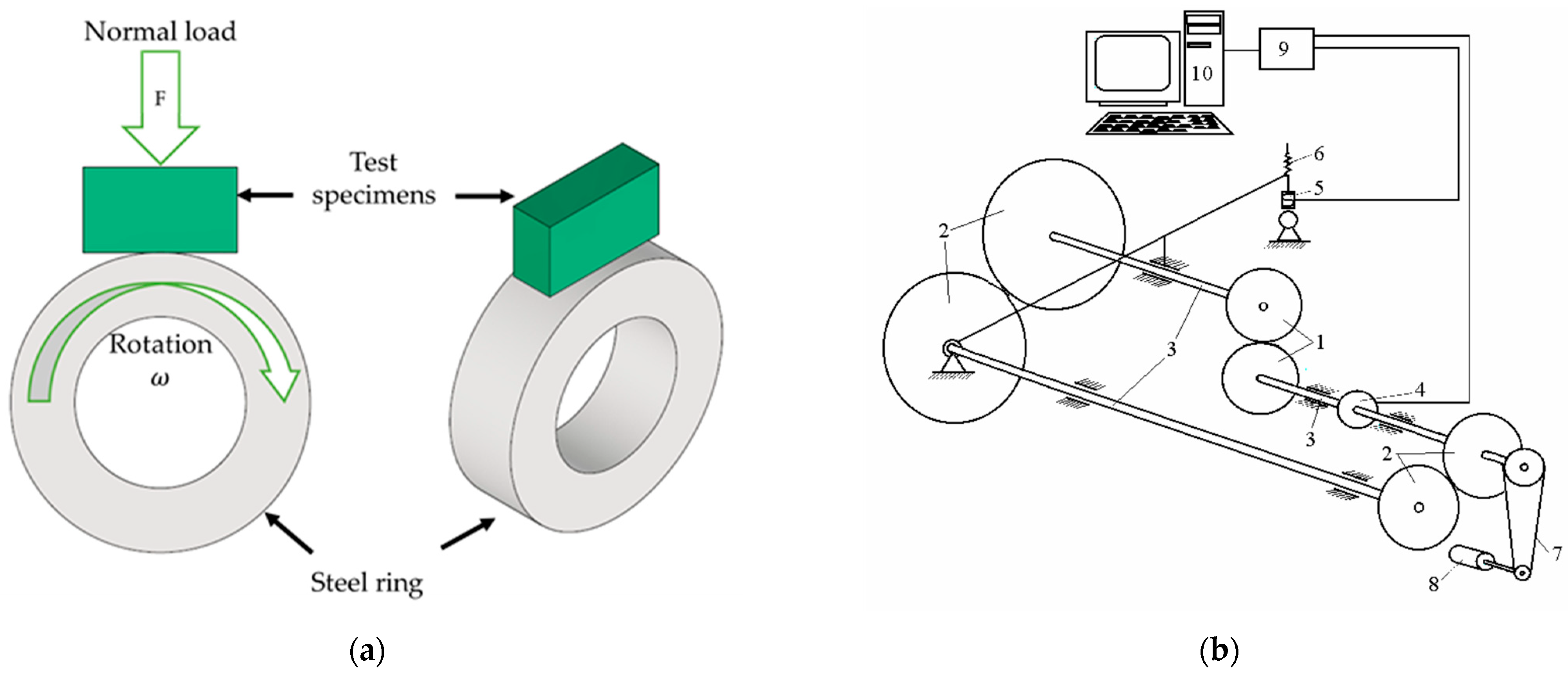
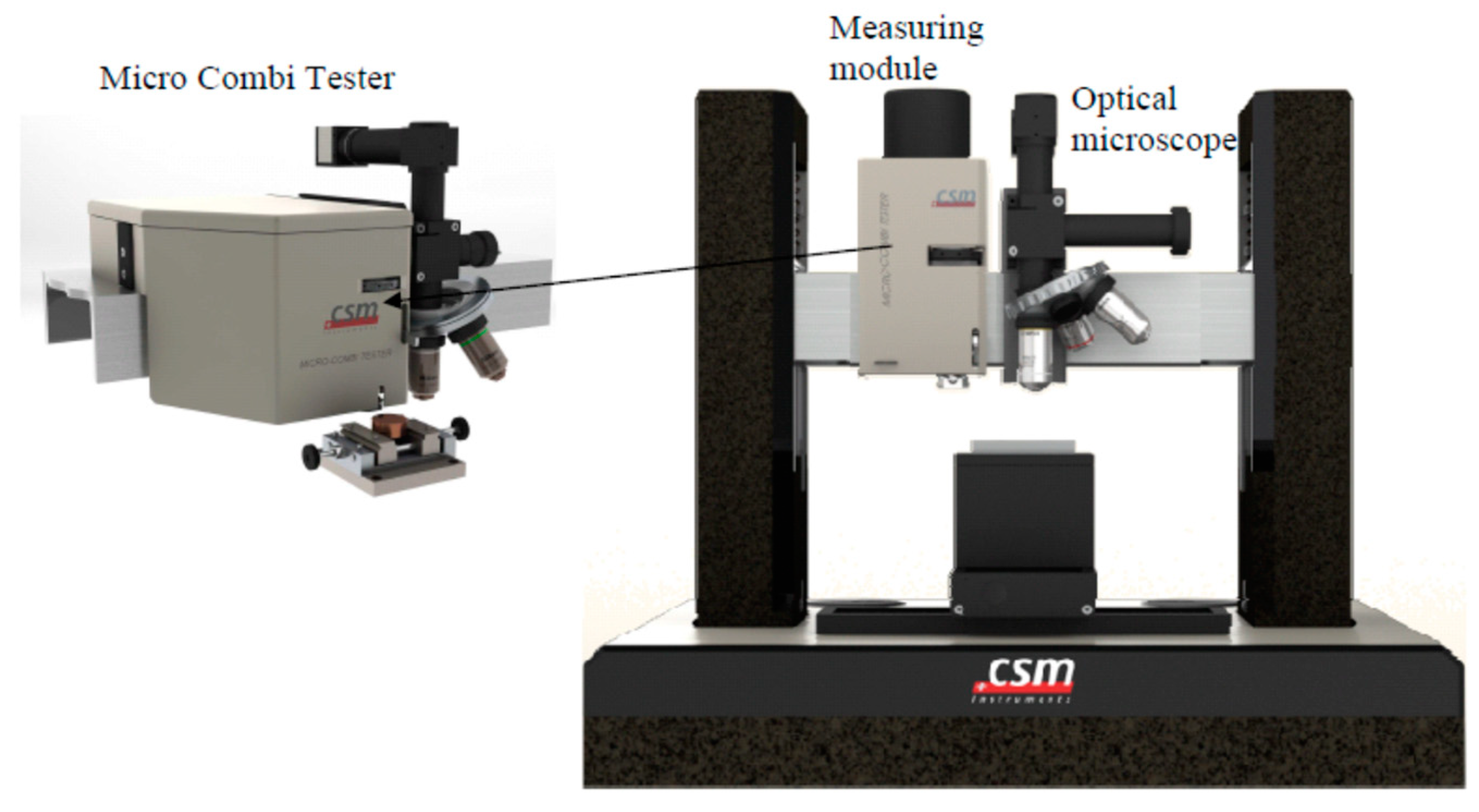


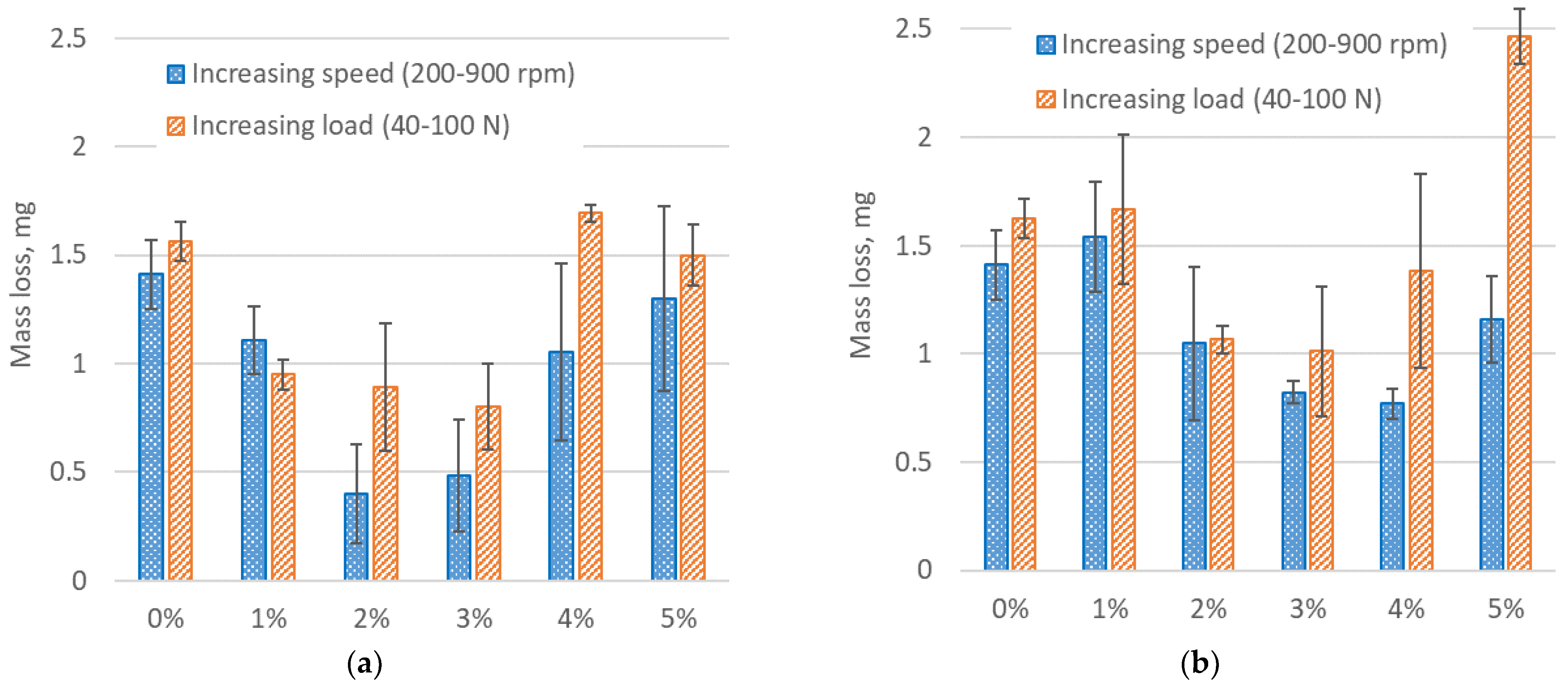

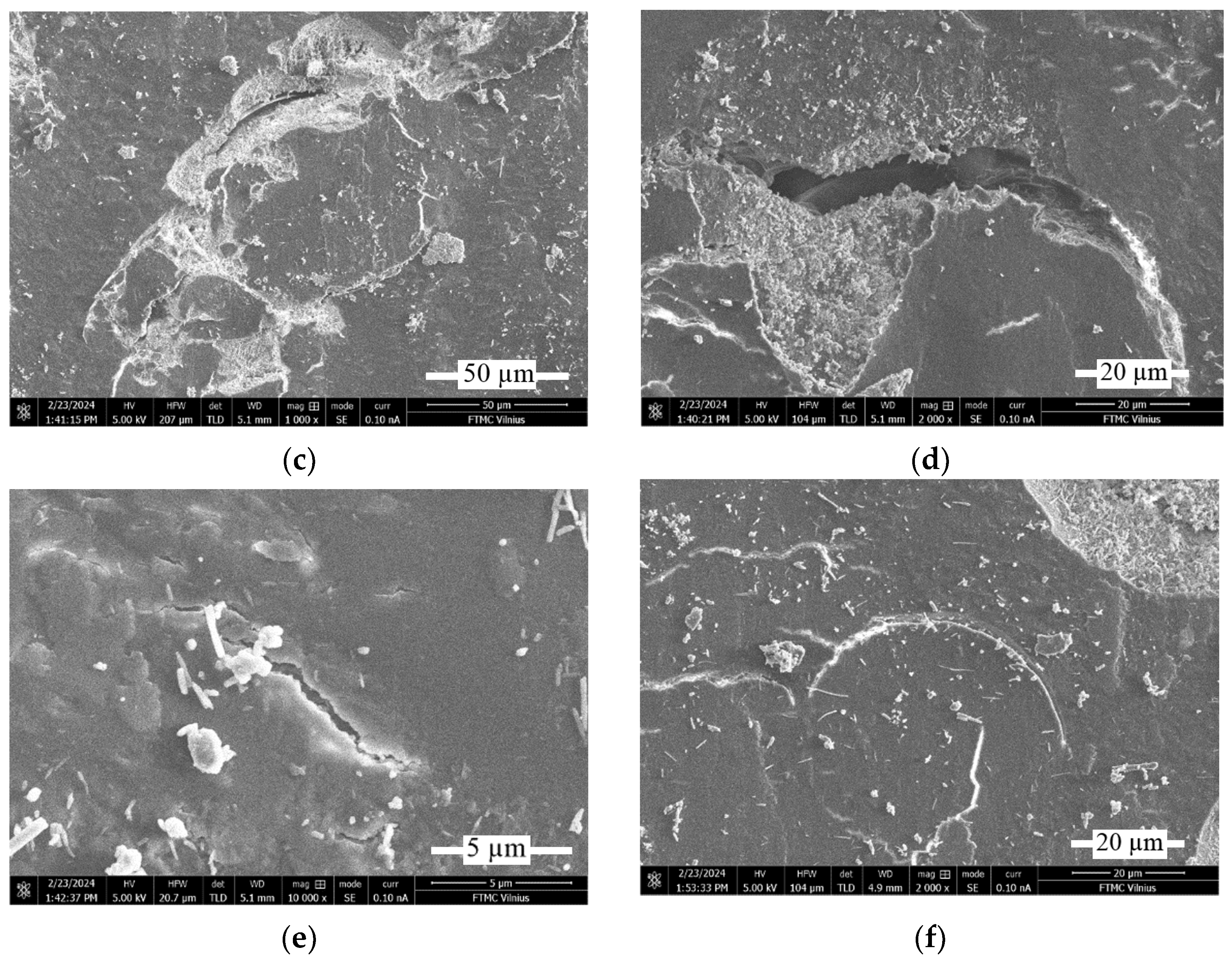
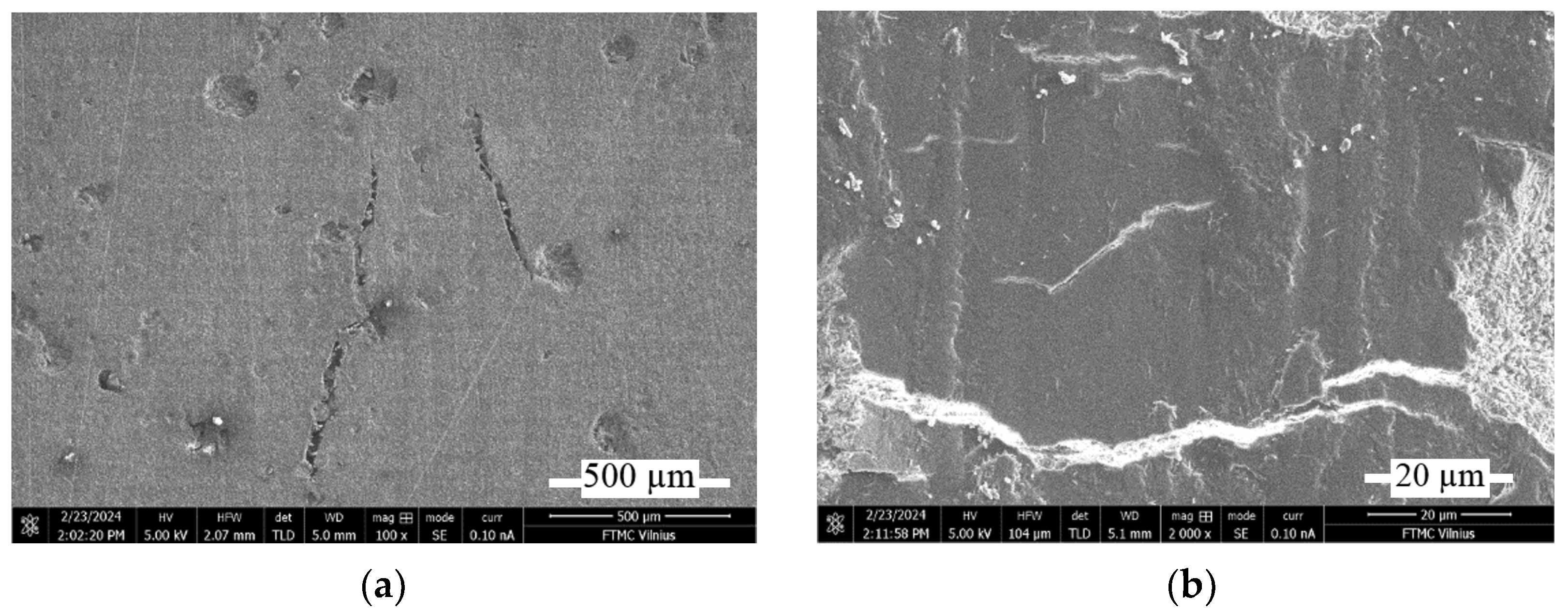


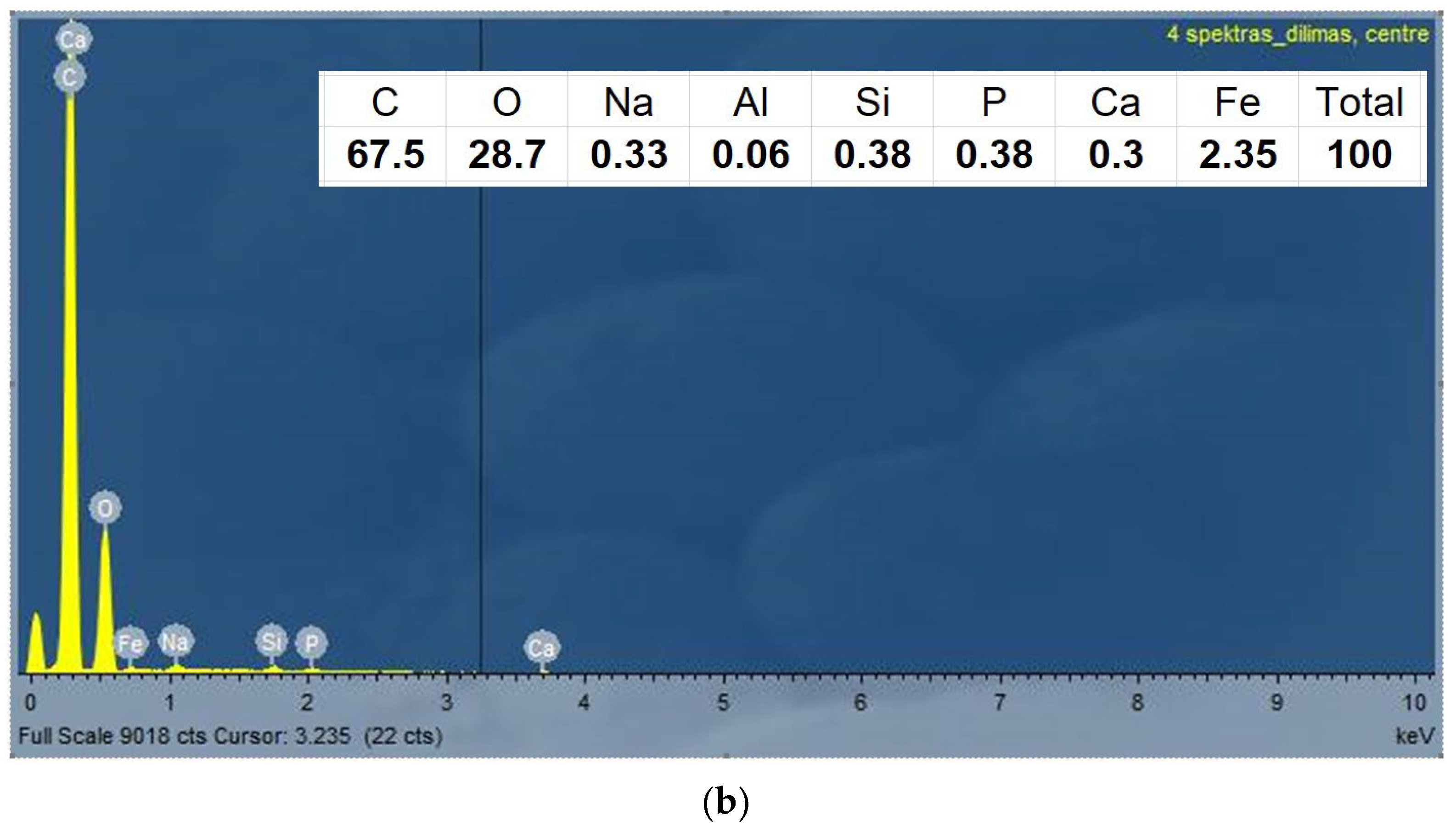


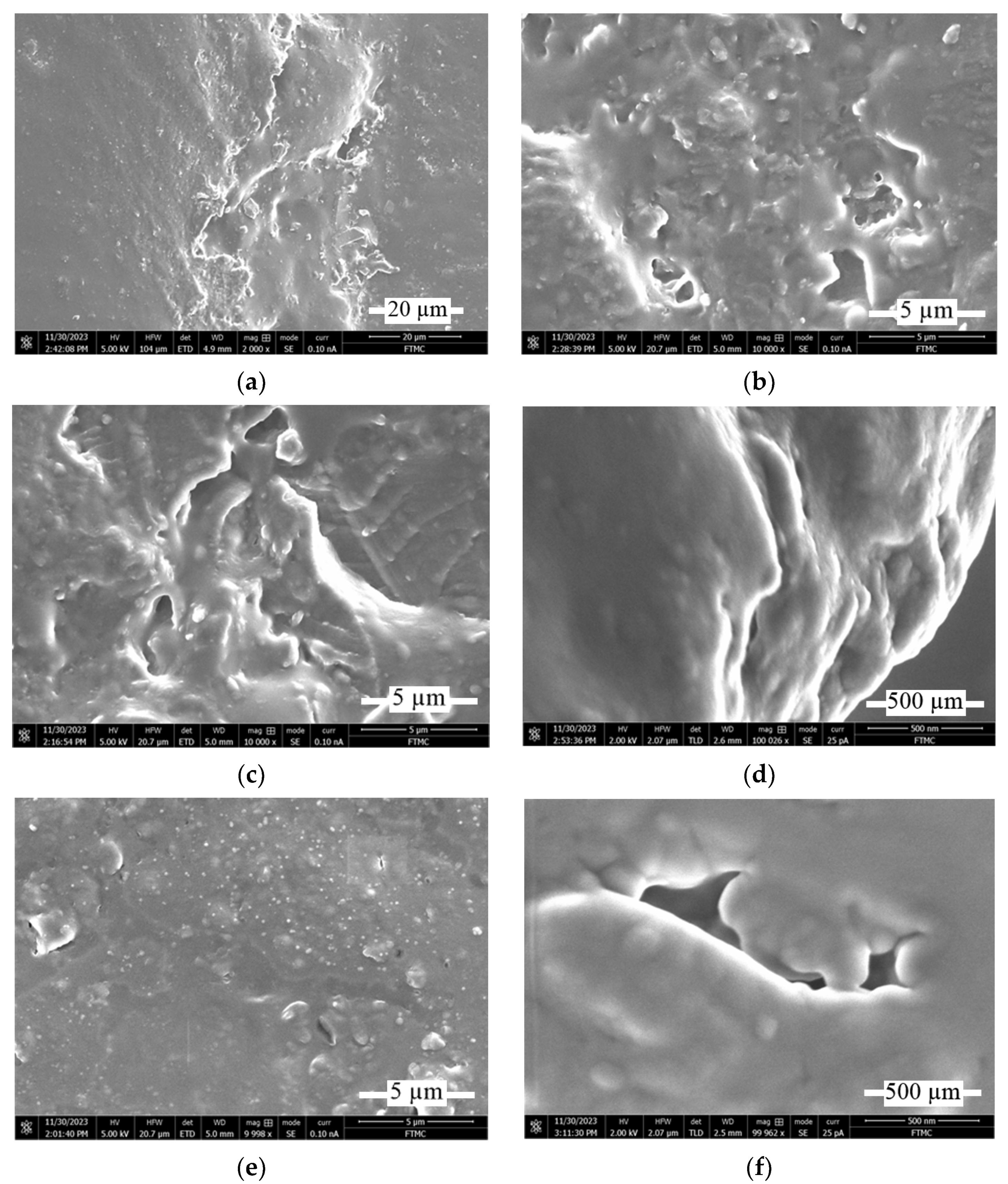
| Properties | Values | Unit |
|---|---|---|
| Viscosity at 25 °C | 150–200 | mPa·s |
| Wavelength | 405 | Nm |
| Tensile strength | 36–45 | MPa |
| Elongation | 8–12 | % |
| Flexural strength | 50–65 | MPa |
| Flexural modulus | 1.2–1.6 | GPa |
| Volume shrinkage | 4.5–5.5 | % |
| Heat deflection temperature | 65–70 | °C |
| Density | 1.05–1.25 | g/cm3 |
| Hardness (shore D) | 82 | D |
| Notched impact strength | 25 | J/m |
| Properties | Values | Unit |
|---|---|---|
| Type | E glass | |
| Powder shape | Chopped glass fiber | |
| Powder length dimension | 100–200 | μm |
| Moisture content | 0.40 | % |
| Printing Parameters | Values | Unit |
|---|---|---|
| Layer Thickness | 0.05 | mm |
| Exposure time | 2 | s |
| Off time | 1 | s |
| Z lift distance | 5 | mm |
| Z lift speed | 2 | mm/s |
| Bottom exposure time | 35 | s |
| Z retracting speed | 2 | mm/s |
Disclaimer/Publisher’s Note: The statements, opinions and data contained in all publications are solely those of the individual author(s) and contributor(s) and not of MDPI and/or the editor(s). MDPI and/or the editor(s) disclaim responsibility for any injury to people or property resulting from any ideas, methods, instructions or products referred to in the content. |
© 2024 by the authors. Licensee MDPI, Basel, Switzerland. This article is an open access article distributed under the terms and conditions of the Creative Commons Attribution (CC BY) license (https://creativecommons.org/licenses/by/4.0/).
Share and Cite
Padgurskas, J.; Vilčinskas, V.; Rashyid, M.I.; Muflikhun, M.A.; Rukuiža, R.; Selskienė, A. Tribological Research of Resin Composites with the Fillers of Glass Powder and Micro-Bubbles. Materials 2024, 17, 3764. https://doi.org/10.3390/ma17153764
Padgurskas J, Vilčinskas V, Rashyid MI, Muflikhun MA, Rukuiža R, Selskienė A. Tribological Research of Resin Composites with the Fillers of Glass Powder and Micro-Bubbles. Materials. 2024; 17(15):3764. https://doi.org/10.3390/ma17153764
Chicago/Turabian StylePadgurskas, Juozas, Vitoldas Vilčinskas, Muhammad Ibnu Rashyid, Muhammad Akhsin Muflikhun, Raimundas Rukuiža, and Aušra Selskienė. 2024. "Tribological Research of Resin Composites with the Fillers of Glass Powder and Micro-Bubbles" Materials 17, no. 15: 3764. https://doi.org/10.3390/ma17153764
APA StylePadgurskas, J., Vilčinskas, V., Rashyid, M. I., Muflikhun, M. A., Rukuiža, R., & Selskienė, A. (2024). Tribological Research of Resin Composites with the Fillers of Glass Powder and Micro-Bubbles. Materials, 17(15), 3764. https://doi.org/10.3390/ma17153764









